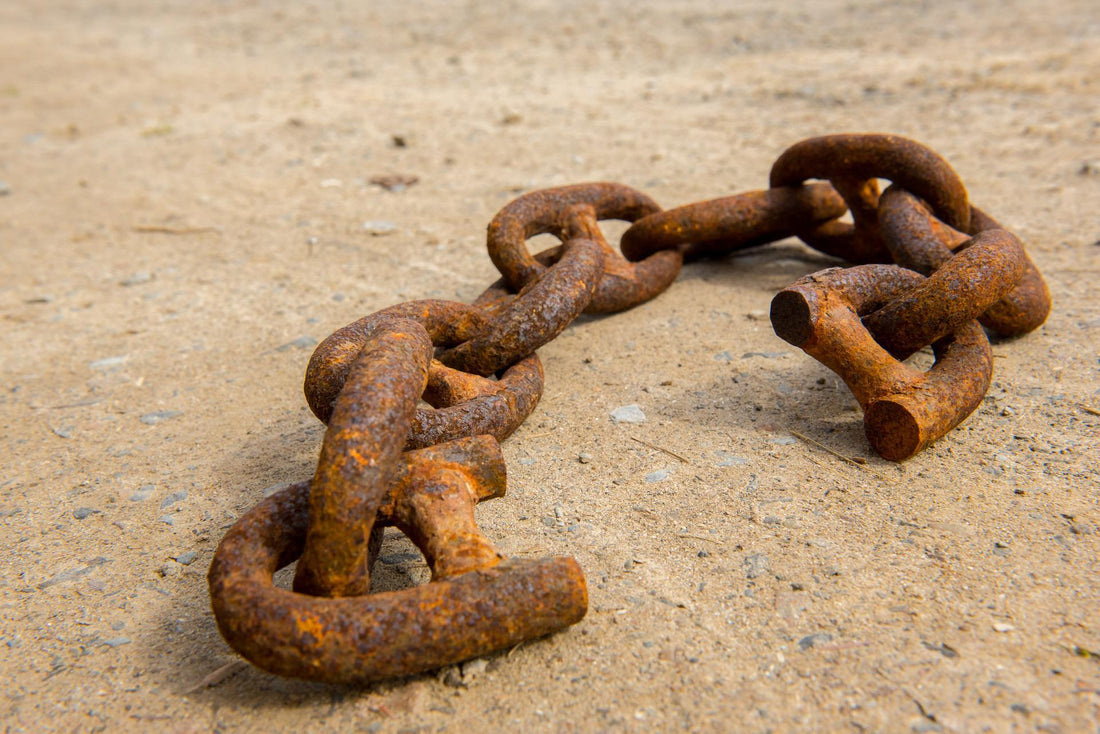A very common question that we hear nearly every day from crane operators is "When Should You Replace Your Load Chain?". This is a very good questions and can be answered with either a basic visual inspection by a trained operator, or a more in depth inspection performance by an authorised inspection or testing body - there are hundreds of companies across the UK who can carry this service out for you.
Although cranes these days are very long lasting, like with all products, when used frequently develop heavily worn parts. How much the parts wear depends on a few factors.
The first being how well they are maintained - if you hoist chain is left in a dry unlubricated condition, then it is like to significantly reduce the working life of the chain, chain guide and load sprocket, leading to quick deterioration and extreme noise.
Secondly, users should operate equipment in accordance with the user manuals provided to ensure correct usage and operation. We can't stress enough that failing to do so will only ever result in dangerous operation and significantly higher wear rates.
Lastly, if all of the above recommendations are carried out, yet your hoist is of low quality and produced by an unestablished brand, then it may contain inferior components that fail early and do not meet industrial standards.
Another resulting factor of buying on a budget is that you may struggle to obtain spare parts, especially at speed. Budget products often require parts to be shipped direct from China, causing major downtime and loss of revenue, and we know that's never ideal.
Load Chains require proper lubrication. Please note that this goes beyond simply rubbing WD40 along the outside of the chain surface, as these are not the surfaces subjected to the intense pressures of operation. The correct method would be as follows:
- Take a large plastic containers and run as much of the load chain as possible into it.
- Dispense a reasonable amount of high-pressure hoist chain lubricant into the container and over the chain.
- While wearing protective gloves and googles, apply the lubricant to each chain link, paying particular attention to the inside of the links where the pressure stands (where the links meet). This will ensure correct lubrication.
- Remove the chain from the container, wiping off any excess from the outside of the chain and leave standing for a while for the remaining excess to run-off.
- Operate the hoists 'Up' function to recover the load chain into the chain bag. The hoist should operate smoothly and efficiently for a good amount of time.
- Monitor any chain wear regularly and record any changes. If wear is visually evident, we recommend changing the load chain immediately.
If the load chain is wearing unevenly or on a particular side of the link (anywhere other than directly below) then an investigation into operator misuse should be made, as poorly trained operators often misuse equipment without any idea they are doing it!
The described wear should suggest that the operator is not lifting in a direct vertical straight line and is in fact causing the hoist to 'side pull' which wears the chain links on the side, resulting in significant damage to the hoist body, chain guide, and sprockets - a costly and preventable repair.
We suggest that you always invest in a good quality hoist with immediate spare parts availability and, where applicable, invest in a good spares package to ensure minimal downtime, while also investing in preventative maintenance which is required by PUWER laws here in the UK.
If you need more information on load chains and when to replace them, please don't hesitate to get in touch, and one of our Technical Sales Team can advise on any of your questions.

